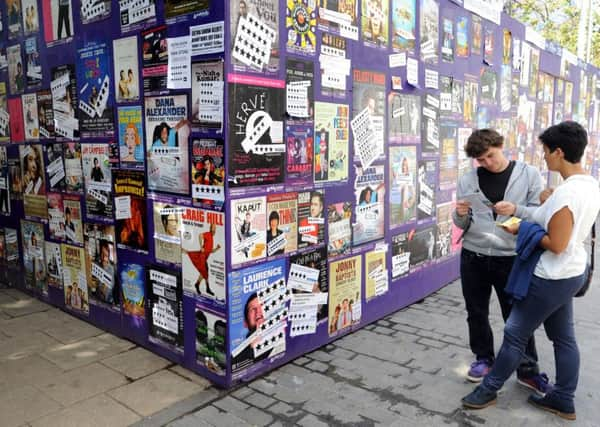Star ratings or no star ratings? That is the question


This was a few years ago, when the Fringe was smaller and a single review in a mainstream publication had more power than it does now, but I still think about – and share – this story often, because it illustrates the corrosive power of star ratings. I’ve often wondered: did anyone actually read that review, or did they just see the four stars and immediately book tickets? Nowadays, of course, a single four-star review isn’t enough. You need dozens on your poster before you start to look like the “hot” show everyone should see. Lots of posters don’t even quote the reviews; they just print the stars.
I hate this. It turns us into insects buzzing towards the brightest light. As an audience member I’ve learned how to read between the stars, as it were. For example I’ve long been suspicious of a show that has four or five stars across the board. Really, everybody loves it? That suggests to me that the show is telling people what they want to hear rather than challenging them to change their minds. My advice, if you must pay attention to star ratings, is to look for the shows that have a five-star review and a one-star review, which suggests something a bit more interesting and subversive is going on. My favourite example of this is a show a few years ago by Vanishing Point, which somehow managed to get a five-star, a four-star, a three-star, a two-star and a one-star review, and decided to put all of them on its poster and challenge audiences to make up their own minds. It remains one of my favourite Fringe marketing campaigns. Shows with three stars are worth seeking out too, if you assume that they might tick all the boxes of what is considered a “quality” show but just didn’t resonate enough with that particular reviewer. One of my favourite Fringe experiences was a show that had got numerous three-star reviews but was recommended to me by a friend who knew the kinds of things I liked.
Advertisement
Hide AdAs a commissioning editor I wish I could do away with star ratings, and have often suggested this to The Scotsman. “Think of the statement it would make,” I say. The leading Festival newspaper is not going to be part of this circus anymore. OK, my bosses respond, but what if people just stop reading The Scotsman and putting its reviews on their posters? I’ve never been able to come up with a compelling response, and since they’d be the ones losing money, not me, I tend to shut up after that.
But let’s assume, for a moment, that the star ratings system is a reliable indicator of the standard of a show. If so, here’s my plea: never forget that the Fringe is a testing ground for ideas, and people getting it wrong is as important a part of it all as people getting it right. As an audience member, you can sometimes learn more about the world from a bad show than a good one. For performers, a one-star show can sometimes give birth to a four-star one. For a couple of years The Scotsman grouped its one-star reviews together under the heading “you’re a star”. We stopped partly because some people assumed it was a cruel joke. It wasn’t. We meant it.